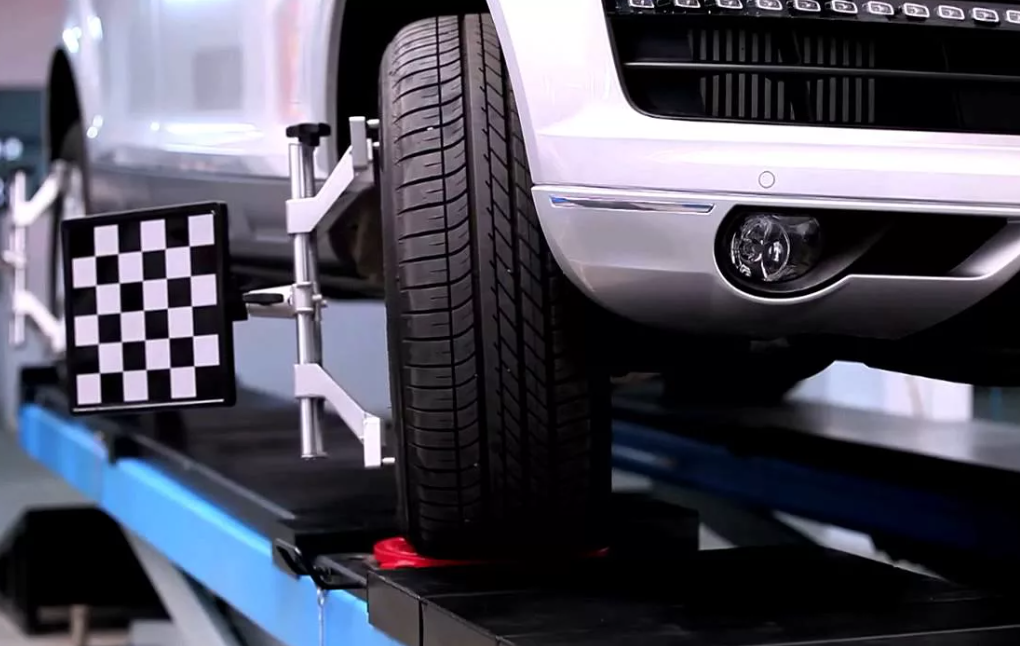Wheel alignment, also known as tire alignment or tracking, is a critical aspect of vehicle maintenance that often gets overlooked. However, ensuring your vehicle’s wheels are properly aligned is essential for several reasons.
First and foremost, proper wheel alignment enhances safety on the road. When your wheels are out of alignment, it can lead to uneven tire wear and unpredictable handling, especially at high speeds or during emergency maneuvers. Misaligned wheels can cause your vehicle to pull to one side, making it difficult to maintain control and increasing the risk of accidents. By regularly checking and adjusting the wheel alignment, you can ensure that your vehicle responds predictably to steering inputs, reducing the likelihood of accidents and keeping you and your passengers safe.

In addition to safety concerns, proper wheel alignment also has financial benefits. Misaligned wheels can cause tires to wear unevenly, resulting in premature tire replacement. Since tires can be a significant expense for vehicle owners, ensuring proper wheel alignment can help you maximize the lifespan of your tires and avoid unnecessary spending on replacements. Moreover, misaligned wheels can also increase fuel consumption, as the vehicle’s engine has to work harder to overcome the additional rolling resistance caused by uneven tire wear. By maintaining proper wheel alignment, you can improve fuel efficiency and save money on fuel costs over time.
Furthermore, wheel alignment plays a crucial role in maintaining vehicle performance and drivability. When your wheels are properly aligned, it ensures that all four tires are working together harmoniously, optimizing traction, handling, and overall vehicle dynamics. Proper alignment also minimizes unnecessary stress on steering and suspension components, extending their lifespan and reducing the likelihood of premature wear and tear.
It’s essential to note that wheel alignment isn’t a one-time task; it’s something that needs to be checked and adjusted periodically, typically during routine maintenance services or whenever you notice signs of misalignment, such as uneven tire wear or steering pulling to one side. Many automotive experts recommend having the wheel alignment checked at least once a year or every 10,000 miles, although more frequent inspections may be necessary if you frequently drive on rough roads or encounter potholes.
In conclusion, wheel alignment is a critical aspect of vehicle maintenance that should not be overlooked. Proper alignment enhances safety, reduces tire wear, improves fuel efficiency, and preserves vehicle performance and drivability. By investing in regular wheel alignment checks and adjustments, you can ensure that your vehicle operates optimally, saving you money and providing peace of mind on the road.
Proper wheel alignment is key to safe, efficient driving year-round—but as summer temperatures soar, your car’s overall performance (including steering response and tire grip) can be further tested by extreme heat, which affects tire pressure, suspension, and even the AC system that keeps you comfortable. Hollywood stars filming on scorching sets know all about staying cool under pressure, with pro tips for vehicle prep that go beyond the basics. For practical advice on beating the heat while keeping your ride in top shape, check out our guide Summer Heat and Your Car’s AC: Keep Cool Like Hollywood Stars on Set. It shares celebrity-approved hacks for AC maintenance, cabin cooling tricks, and on-the-go comfort strategies that pair perfectly with routine alignment checks for worry-free summer drives!